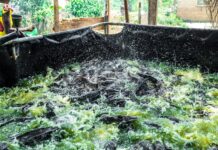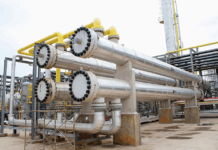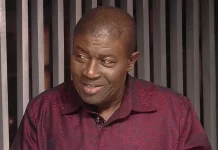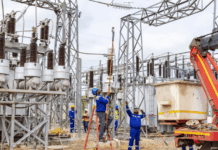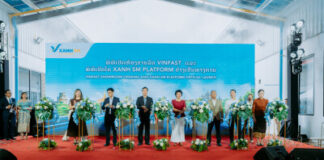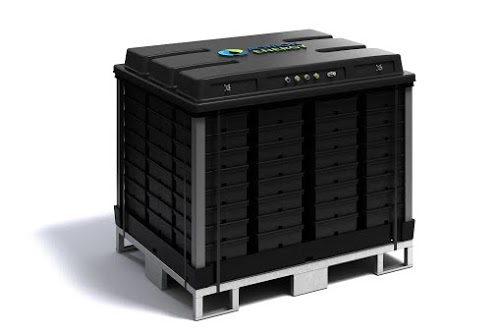
Aquion Energy, a Pittsburgh-based startup, has developed a clean and relatively inexpensive sodium-ion battery for holding the sun’s power
Solar power is considered one of the best ways to make our planet greener, but until recently it’s been impossible to store solar energy in an environmentally benign way. If you wanted to save the sun’s energy for a rainy day, or needed power at night, you had to use lead-acid or lithium-ion batteries that contained toxic materials or required environmentally damaging mining practices, and were often unsafe.
Today, thanks to a small Pittsburgh company called Aquion Energy, finding a clean, high-performance storage battery to pair up with your solar panels is as easy as a visit to the Internet.
Aquion is one of many tech companies hoping to capture a piece of the growing battery storage market. What makes it stand out from the pack is its signature product, the Aqueous Hybrid Ion (AHI) battery, from manufacture to disposal arguably the most environmentally wholesome storage battery in the world.
It was developed by Dr. Jay Whitacre, a Carnegie Mellon University professor of material sciences and Aquion Energy’s founder, who started working on the technology in 2007.
“None of the existing technologies were able to store energy without having these other negative environmental impacts,” he recalled. “So the thought was, I’m only going to put materials in this battery and put processes in the manufacturing route that are clean and sustainable.”
The 21st-century version of a saltwater battery first invented by Alessandro Volta in 1800, the AHI uses a saltwater electrolyte instead of the typical cocktail of caustic chemicals. All of its parts—saltwater, carbon, manganese, cotton, steel, aluminum and plastic—are nontoxic, recyclable and landfill-safe. Its aqueous-ion chemistry means it can never blow up or catch fire, a problem that can afflict lead and lithium-ion batteries when they get old.
At the same time, the AHI meets the strict performance requirements for off-grid and on-grid applications. Unlike its lead-acid and lithium-ion cousins, it can fully discharge without being damaged. And it tolerates greater temperature extremes.
Last spring, the AHI became the first storage battery to be awarded a Bronze status by the prestigious Cradle to Cradle Products Innovation Institute; the group encourages designers and manufacturers to make their products in fundamentally better ways.
The smallest unit Aquion sells is an “S-Line” stack, eight AHI batteries placed on top of each other like Lego blocks. A stack stands nearly a meter tall, weighs around 115 kilos and is stationary. Because it can be completely discharged and recharged 3,000 times without degrading, it will provide more than eight years of daily use.
A single S-Line stack contains close to 2.5 kWh of energy—not much when you consider the average American home uses about 30 kWh per day. But the stacks are designed to be wired together in parallel, and a series of stacks paired with solar panels is enough to run a home.

How many depends on the size of the house. Wealthy Americans have installed up to 500 stacks on their estates. But Matt Maroon, Aquion’s vice president of product management, said typical customers are homeowners and small businesses who are off the power grid, have an unreliable grid connection or have invested in solar energy and want to go all-green by replacing their dirty diesel generators with storage batteries. They generally use between six and 20 stacks, he said.
As for the price, that varies with the distributor; one dealer was recently selling Aquion’s S20P battery stack for around US$1,100 online. According to Maroon, their product’s current cost, less than $500 per kilowatt hour, is already competitive with other battery technologies. He expects improvements in battery design, manufacturing efficiencies and higher sales volumes to cut the price in half within five years, saying the driving philosophy is “to keep the cost down so our battery is not just for the rich individual in Hawaii or California. Our battery will truly be able to solve problems for households worldwide, especially in developing countries.”

Cost-cutting will be crucial if Aquion is to challenge lithium-ion technology in the marketplace. “Energy storage is really about money,” said Whitacre. “If it’s not cheap, people won’t buy it.”
The company’s offices are located in a small brick house on a side street in a working-class neighborhood of Pittsburgh. It also leases manufacturing space in a former Volkswagen assembly plant 50 kilometers away.
Reportedly blessed with more than $100 million in funding from private investors including Bill Gates, it has grown to about 100 employees, split evenly between its offices and manufacturing facility. Though Aquion prefers not to share details of its sales, it has installed more than 10 MWh of batteries on six different continents, and the factory is ramping up production.
Mass production is what makes the AHI battery unique today, said Whitacre. “The big differentiator right now is we’re the only sodium-ion chemistry that’s in production and for sale. It’s actually a manufactured product. No one else can say that.” He added that the biggest challenge going forward is “growing smartly”—figuring out which markets to enter, when and how.
He expects Aquion to grow and prosper in step with the energy storage industry, which some experts predict will bring in revenues of more than $20 billion worldwide by 2025. The company intends to make a profit while staying true to its founding philosophy—making the planet greener and changing the way the world uses energy.
By Bill Steigerwald




